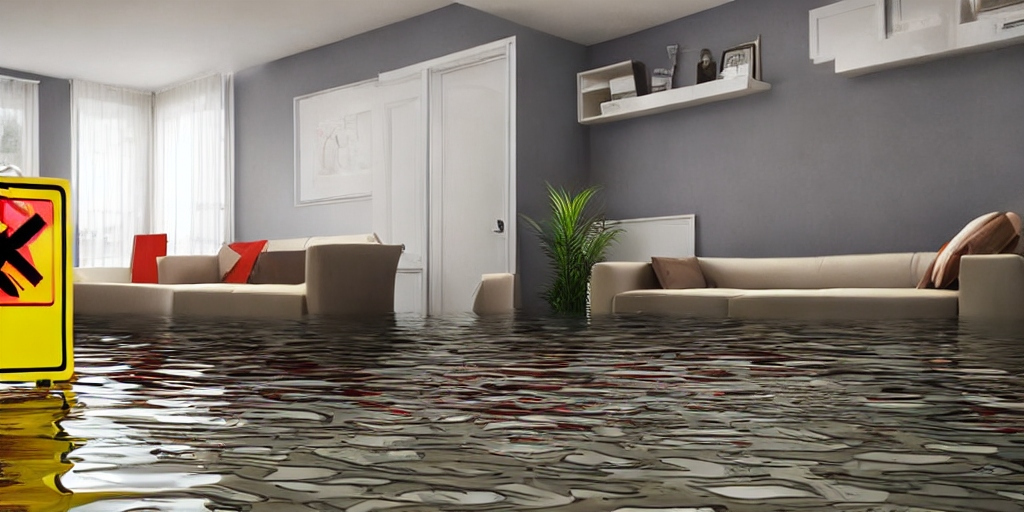Water damage can strike at any moment, leaving homeowners in a state of panic and confusion. Whether it’s a burst pipe, flooding, or a leaky roof, the aftermath of water damage requires immediate attention and a systematic approach to restoration. In this guide, we will address key questions surrounding water damage emergency clean up, providing insights into what to do immediately, how to clean your house, the consequences of neglecting water damage, and the proper protocol for clearing water damage.
What should I do immediately after water damage emergency clean up?
The first moments after water damage occurs are crucial. Swift action can mitigate the extent of the damage and prevent long-term issues. Follow these steps:
- Assess the Safety: Before diving into any clean-up efforts, ensure that the affected area is safe to enter. Identify and address any potential hazards like electrical issues or structural damage.
- Stop the Source: If the water damage is due to a leak or burst pipe, turn off the main water supply to prevent further flooding.
- Document the Damage: Take photographs or videos of the affected areas. This documentation can be valuable for insurance claims and restoration efforts.
- Remove Excess Water: Use towels, mops, or a wet vacuum to remove as much standing water as possible. The sooner you eliminate excess water, the better chance you have of preventing mold growth.
- Ventilate the Area: Increase ventilation by opening windows and doors. This helps in speeding up the drying process.
Also Read: Water Damage Emergency Clean Up: Essential Steps for a Swift Recovery
How do I clean my house from water damage emergency clean up?
After addressing the immediate concerns, it’s time to focus on the cleanup process. Follow these steps for effective water damage restoration:
- Remove Damaged Items: Dispose of items that cannot be salvaged. This includes furniture, carpets, and other possessions that are extensively damaged.
- Clean and Disinfect: Thoroughly clean and disinfect all surfaces. Water damage can introduce contaminants, and disinfecting is essential for a healthy living environment.
- Dry Out the Area: Utilize fans and dehumidifiers to expedite the drying process. Ensure that the affected area is completely dry to prevent mold growth.
- Inspect for Mold: Keep a close eye on potential mold growth. If you notice any signs of mold, address it promptly to prevent further issues.
What happens if you don’t clean up spilled water?
Neglecting to address water damage promptly can lead to severe consequences. These may include:
- Mold Growth: Standing water creates an ideal environment for mold to thrive. Mold not only damages your property but can also pose health risks.
- Structural Damage: Over time, water can weaken the structure of your home, leading to issues like rotting wood and compromised foundations.
- Health Hazards: Stagnant water can attract pests and become a breeding ground for bacteria. This can result in various health hazards for the inhabitants.
How do you clear water damage emergency clean up?

Clearing water damage requires a systematic approach. Here’s a step-by-step guide:
- Assessment: Conduct a thorough assessment of the damage. Identify the extent of the water damage and create a comprehensive plan for restoration.
- Water Extraction: Employ professional-grade equipment to extract water from the affected areas.
- Drying and Dehumidification: Ensure thorough drying of the space using industrial fans and dehumidifiers. This step is crucial in preventing mold growth.
- Cleaning and Sanitizing: Clean and sanitize all affected surfaces to eliminate potential contaminants and health risks.
- Restoration: Repair and restore damaged structures, flooring, and any other affected components to their pre-damage condition.
Water damage emergency clean up reviews: Choosing the Right Restoration Service
In the aftermath of water damage, finding the right restoration service is paramount. Consider factors such as:
- Proximity: Look for water damage emergency clean up near me to ensure a quick response.
- Cost: Understand the water damage emergency clean up cost and choose a service that aligns with your budget.
- Reputation: Check for reviews and testimonials, especially those mentioning water damage emergency clean up. Positive reviews are indicative of reliable and efficient services.
- Expertise: Opt for a service with experience in water damage restoration. Services like Servpro are known for their expertise in handling such situations.
Also Read: The Essential Guide to Water Damage Emergency Clean Up
Conclusion
Navigating through the aftermath of water damage can be overwhelming, but with a systematic approach and swift action, you can minimize the impact. Remember, the key to successful water damage emergency clean up lies in quick response, thorough cleaning, and choosing the right professionals for the job. Act promptly, and you can turn a water damage crisis into an opportunity for a refreshed and restored home.










